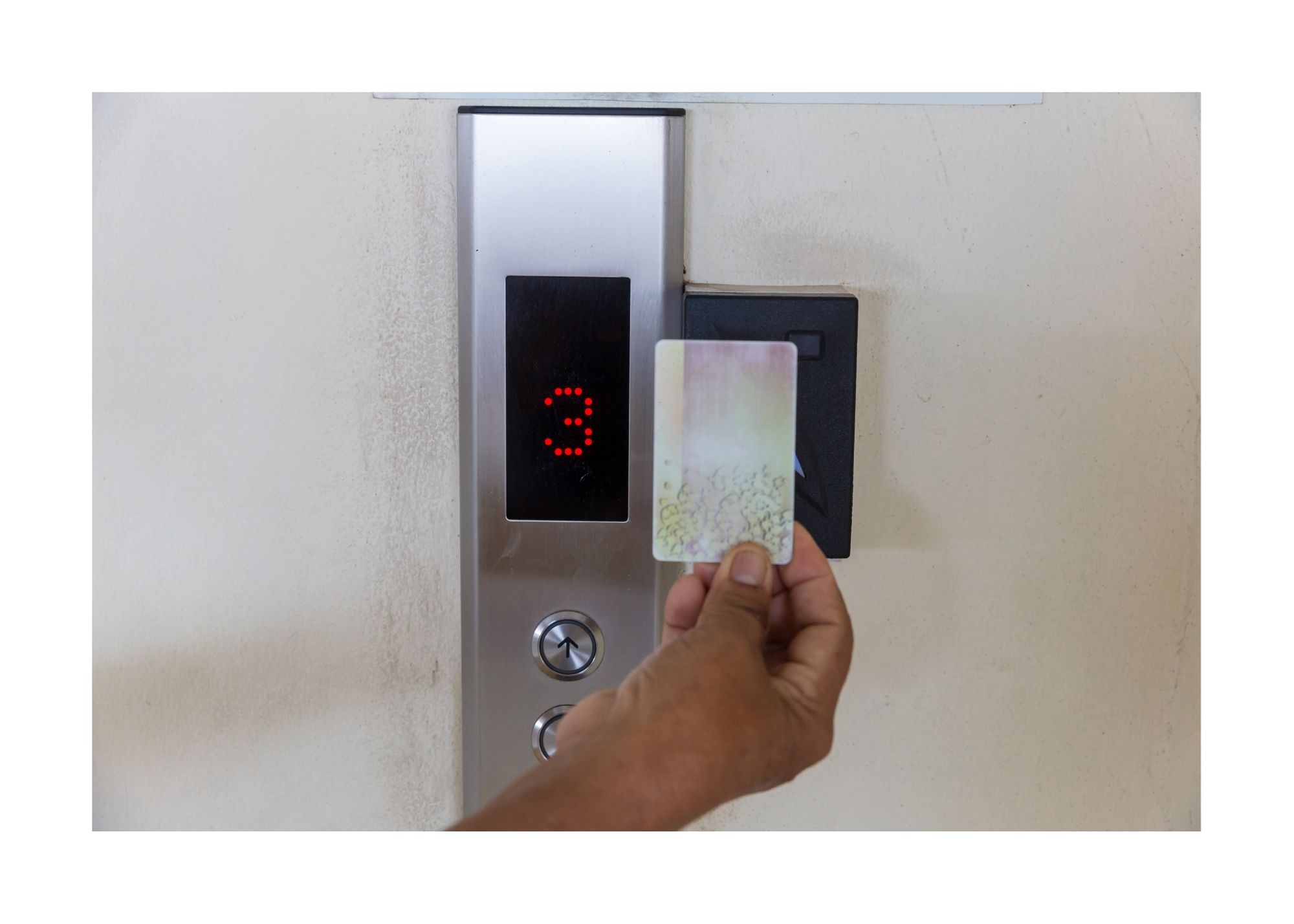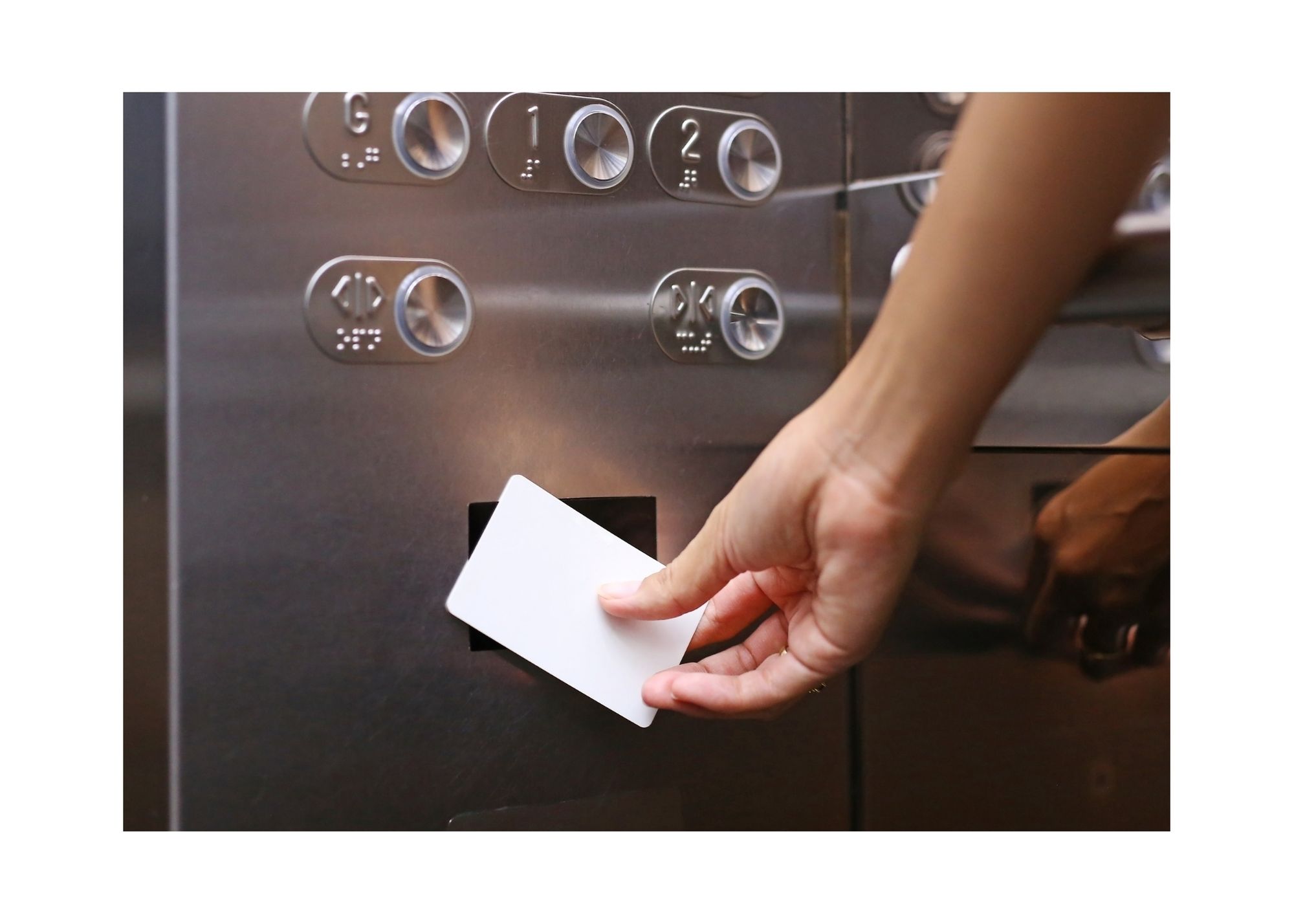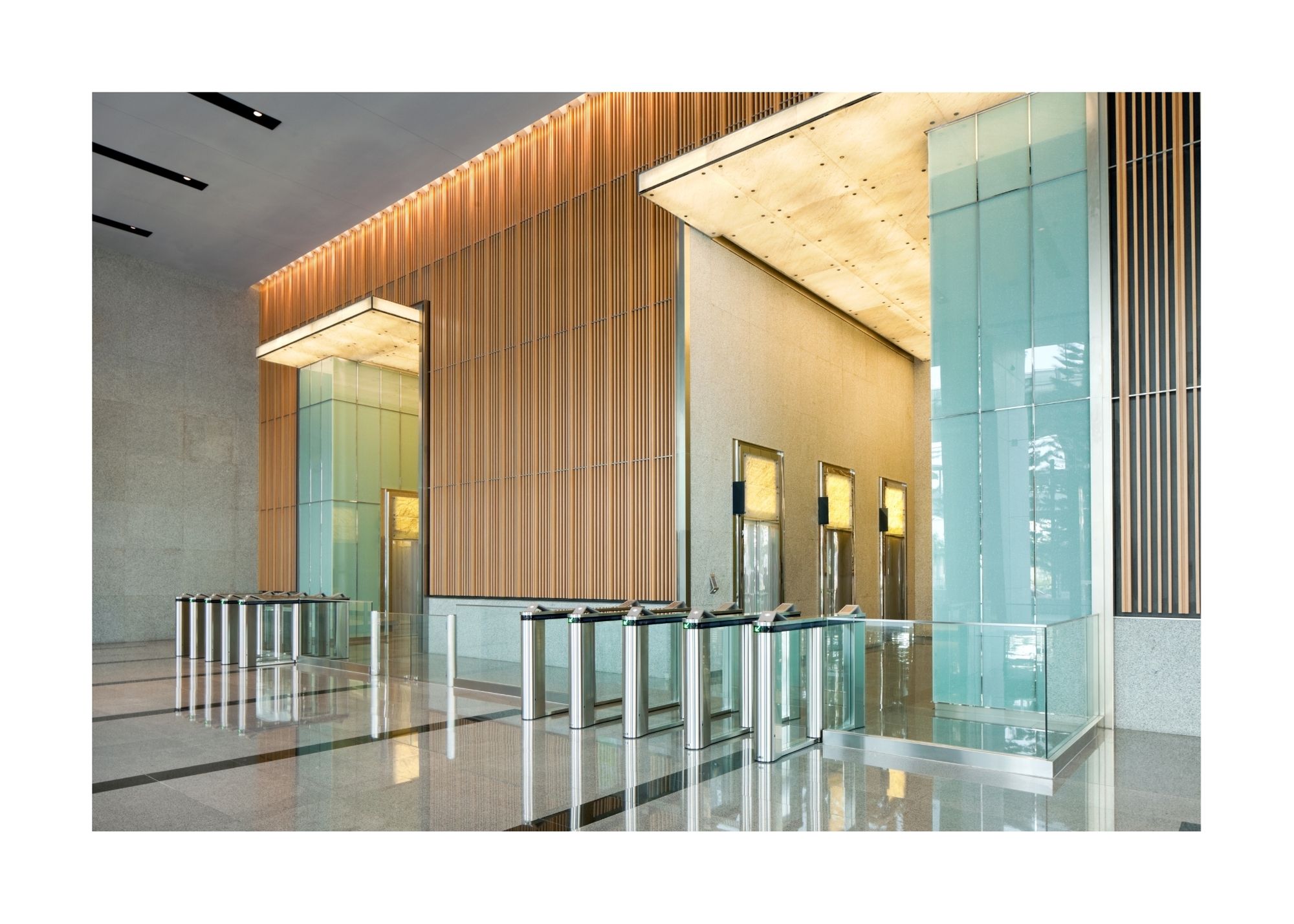Elevator Access Control
Elevator access control restricts the use of elevators in your facility to only authorized individuals. These systems often consist of elevator card readers or keyfob systems, personalized credentials, special elevator control software, and elevator floor lockout equipment.
Below are some questions that can help determine if elevator access control is right for your facility and if you need to consult an access control installer:
☑ Do you want to restrict access to specific floors of a building?
☑ Do you want anyone to be able to access the elevators?
☑ Do you want floor access to be determined by role, position, authority, or other factors?
☑ Do you need different control levels based on hours or schedules?

Control Floor and Elevator Access
Elevator access control systems work similarly to door access control systems. In some cases, employees may not be permitted access to restricted floors in the facility. The system can be programmed to allow specific roles, such as the executives or senior officers, to go to any floor. Floors that contain general areas, such as the cafeteria, gym, or fitness center, would typically be available to all employees in the facility. For example, accountants can access their floor but not go to the Server room and IT department on a different floor. Optimizing the use of elevator access control requires the expertise of an access control installer who can seamlessly integrate and configure these systems for your specific needs.
Public Buildings with Restricted Floor Access
Some public buildings have elevator access control installed for selective restrictions on specific floors. The Elevator access control system can be programmed to open the door to particular floors only when granted access by a user credential.
The process works when a user presses the elevator in a public facility. Once in the elevator, the user will present their credential to the elevator reader, allowing them access to their private floors in the building. Without the access credential, a visitor could be limited to only particular floors and the office entrance areas of the public building.
Private Buildings with General Floor Access
In this case, only authorized users with verified credentials can scan their secured credentials in front of a reader in the lobby to call the elevator. Once the user enters the elevators, they can access any floors or have floor access based on their credential access.
Single Elevator Systems
Single elevator systems are perfect for smaller facilities. As you can guess, they consist of one elevator in the building. The process works well in case of simplified requirements. In the case of a segmented access level, single elevator systems may not be the best option for your facility.
Systems for Multi-Elevator Banks
Multi-Elevator Banks work for extensive commercial facilities. These systems can be enhanced with integrations, such as anti-tailgating, to prevent additional individuals from entering the elevator with someone that has a proper credential. This process works well in crowded areas and during busy traffic hours. This expensive integration investment is worth it if your facility is large and needs securely customized access for your facility.
Call Command Station and Manual Dispatch
Lobby Command Stations focus on monitoring or controlling the elevator traffic and provides management over elevator function.
Manual Dispatch options are the most expensive options in elevator access control. They allow operators to control the elevator functions and access remotely – such as from a security desk. This technology can work for highly secure facilities with constant personnel monitoring but may not be a great solution for high-traffic buildings.

Elevator Access Control Systems
Access Control Panel & Elevator Controller
The elevator access control panel is a primary control box for the system. It is mounted on top of the lift with a power supply box. It functions to receive, identify, and process the user credential for authentication and controls the elevator call button. They also define how quickly the buttons need to be pressed after a credential has been presented to the reader.
Elevator controllers are available in different types based on the number of floors or elevators controlled by the system.
Elevator Credential Reader
There are two types of credentials that are primarily used to grant access to elevator control systems. Both of these readers can be paired with existing access control systems for door and elevator access.
-
RFID Proximity Readers:
RFID Proximity Reader models are available in 125KHz or 13.56MHz credentials. These models can either be proprietary or HID format. HID format is only used when your company uses HID type credentials. These readers can also be used with any access control system that supports Wiegand type door readers.
-
Mobile Credential Readers:
These advanced readers can support Bluetooth connection to your smartphone while also using standard smartcard type proximity credentials.
Software & System Settings
The elevator access control system uses software to manage a higher number of elevators in a facility. The software often uses advanced technologies and logic functions with various programming to control elevators and provide integration with IP security camera systems. They can integrate with other systems such as video surveillance systems, access control systems, and more. The software has features to host its logs in a cloud server or onsite.

Security Recommendations
- Access control elevators alone do not provide the highest level of security. Security-conscious facilities should not use these systems as the only way of controlling access within your facility.
- Elevator access control can be paired with physical barriers between elevator lobbies and interior areas on restricted floors in your facility. It is a cost-effective solution to improve control and traffic flow.
- Touchless access credentials can be used, especially in the current global pandemic, for a hands-free and germ-free access system. Install a touchless system or upgrade your existing access control to contactless for extended security and safety measures.
- SmartPhone Apps provide a touch-free elevator call option for employees and regular visitors.
- Integration with other systems like access control systems, video surveillance systems, and mass emergency notification systems provide better control and enhanced security in your facility.
Potential System Weaknesses
Even with potential security, Elevator access control is vulnerable to various threats.
Some of them are:
- Join the Group: An unauthorized person can get into the facility with an authorized person. – This is where anti-tailgating integrations and physical barriers can be used!
- Go on a ride: Often, people think the existing passengers are for the next floors, but they can impose a threat by allowing an intruder to gain access to a secured floor.
- Share a card swipe: If a user with multi-floor access uses their credential, the selection buttons for all authorized floors become activated and remain activated for several seconds after the card was swiped. This allows a second person to “piggyback” on the first user’s access privileges by selecting a secured floor immediately after the first person has scanned their credential card.
Umbrella Technologies can guide you to select the best elevator access control components that meet your needs and budget.
